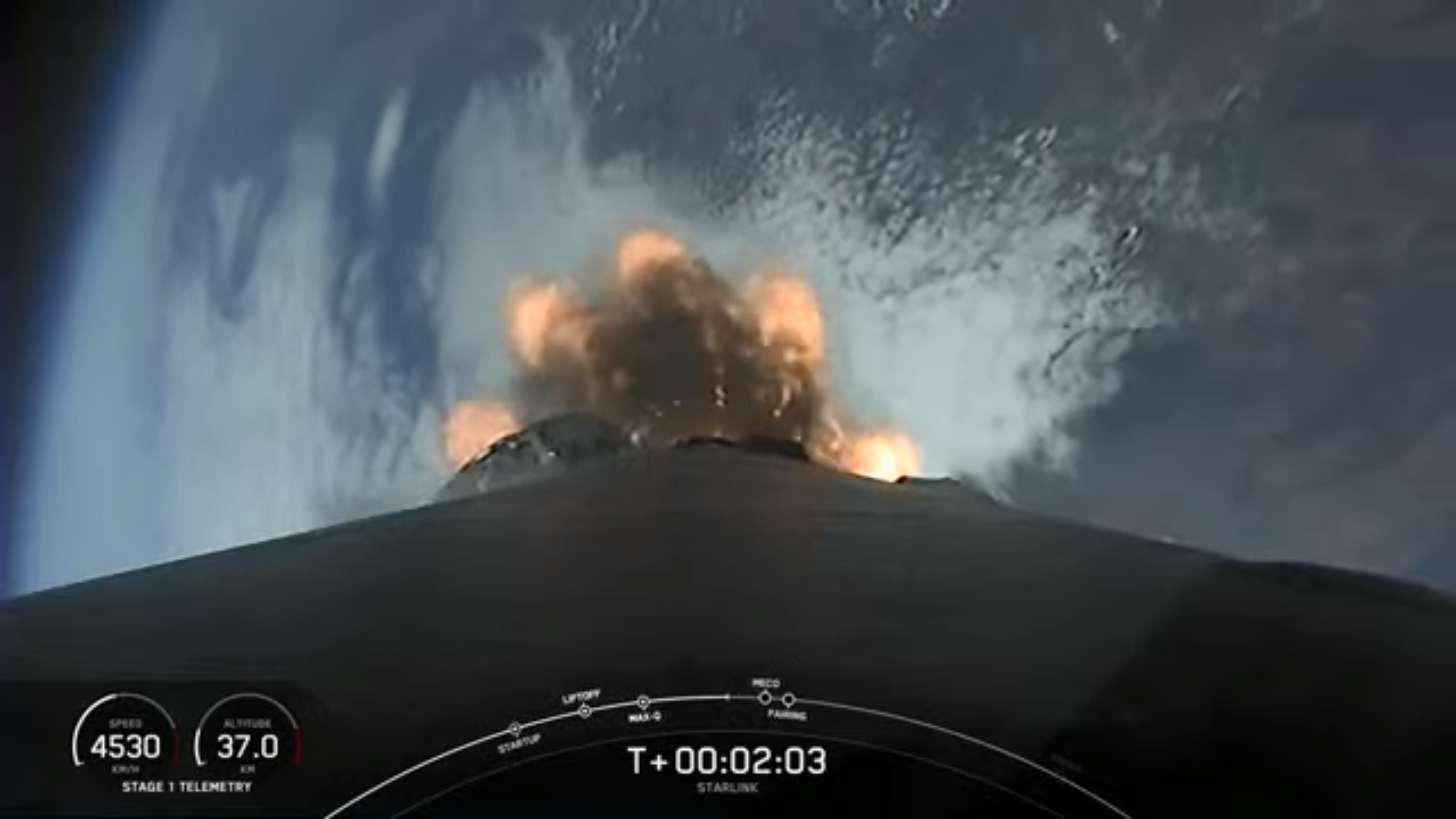
SpaceX has successfully flown a 48-strong “stack” of flat-packed Starlink internet communications satellites out of Vandenberg Space Force Base, Calif., as the Falcon 9 fleet heads squarely for its 50th launch of the year in the coming weeks. The veteran B1063 core—the seventh booster to log a 12th mission—took flight from Space Launch Complex (SLC)-4E at the mountain-ringed West Coast launch site at 12:29 p.m. PST Friday and returned to a smooth oceanic touchdown less than nine minutes later.
Attention now shifts to the East Coast, where another Falcon 9 stands primed to fly SpaceX’s second Starlink mission of July in the pre-dawn darkness of Sunday. Interestingly, this second mission has two launch opportunities, one before dawn and a second after sunset, with both T-0 points promising highly favorable weather.
Flying Friday’s mission was B1063, which entered service in November 2020 and went on to log five launches last year and has now flown four times in 2023. Its key payloads have included NASA’s Sentinel-6 Michael Freilich and Double Asteroid Redirection Test (DART), five Iridium NEXT global mobile communications satellites, 16 advanced broadband satellites for London, England-based OneWeb, over 400 Starlinks and April’s 51-payload Transporter-7 “rideshare” mission.
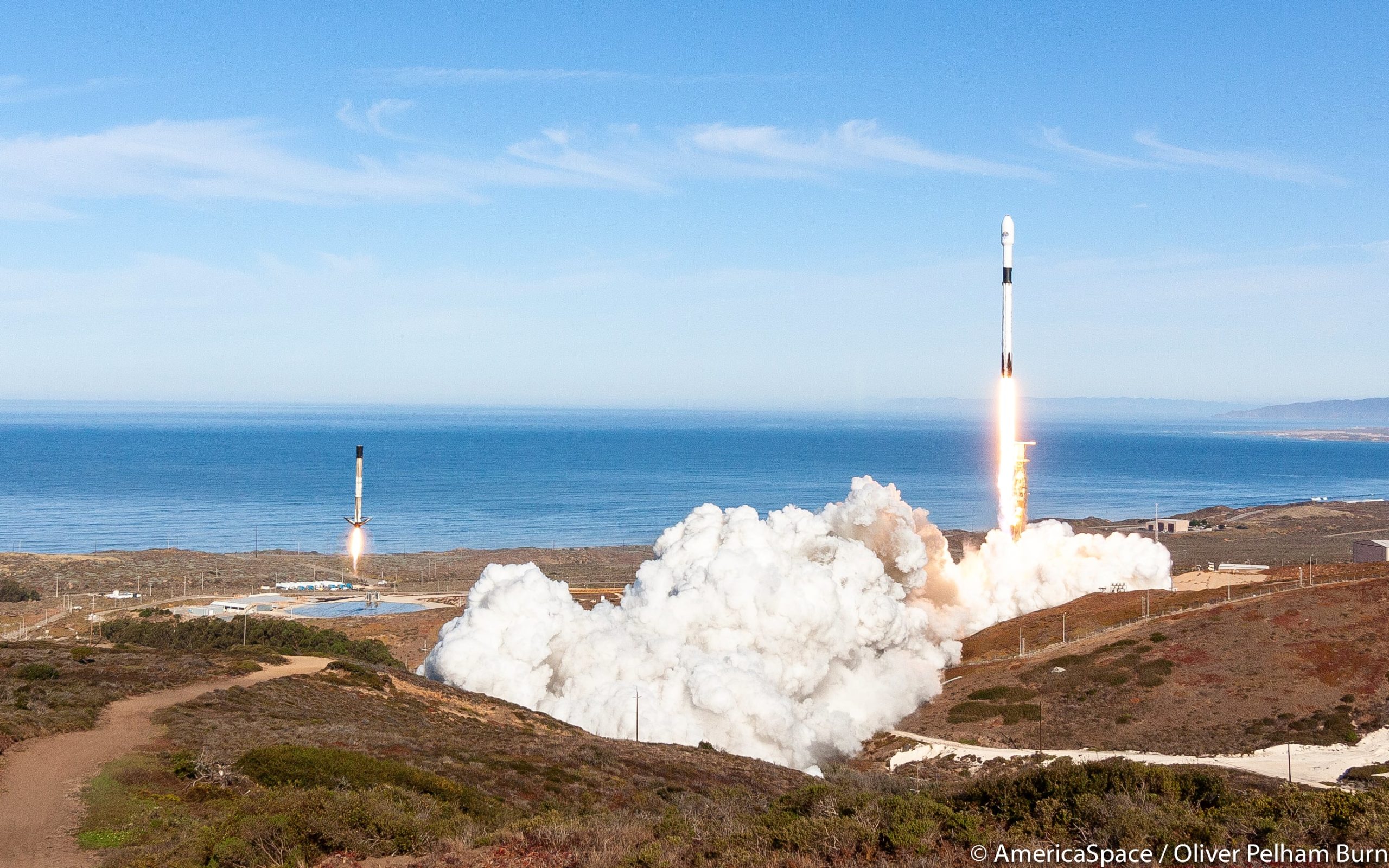
This was also the 14th Falcon 9 launch out of Vandenberg in 2023, eclipsing SpaceX’s previous personal best of 13 flights in 2022. Four boosters—including a brand-new core, which joined the West Coast fleet in January—have wrapped up those 14 missions, achieving launch-to-launch turnaround times as short as just 34 days and delivering 498 Starlinks, a multitude of CubeSats, smallsats and microsats on a pair of Transporter rideshares in April and June and the inaugural Tranche-0 of the Transport and Tracking Layer (TTL) for the Space Development Agency (SDA).
Liftoff occurred on time at 12:29 p.m. PST Friday and B1063 roared into characteristically murky Vandenberg skies, its presence only apparent thanks to a tongue of flame glimmering through the dense cloud. The seasoned core powered the 230-foot-tall (70-meter) Falcon 9 for the opening 2.5 minutes of flight, before separating and executing a pinpoint descent and landing on the West Coast-based Autonomous Spaceport Drone Ship (ASDS), “Of Course I Still Love You”, situated offshore in the Pacific Ocean.
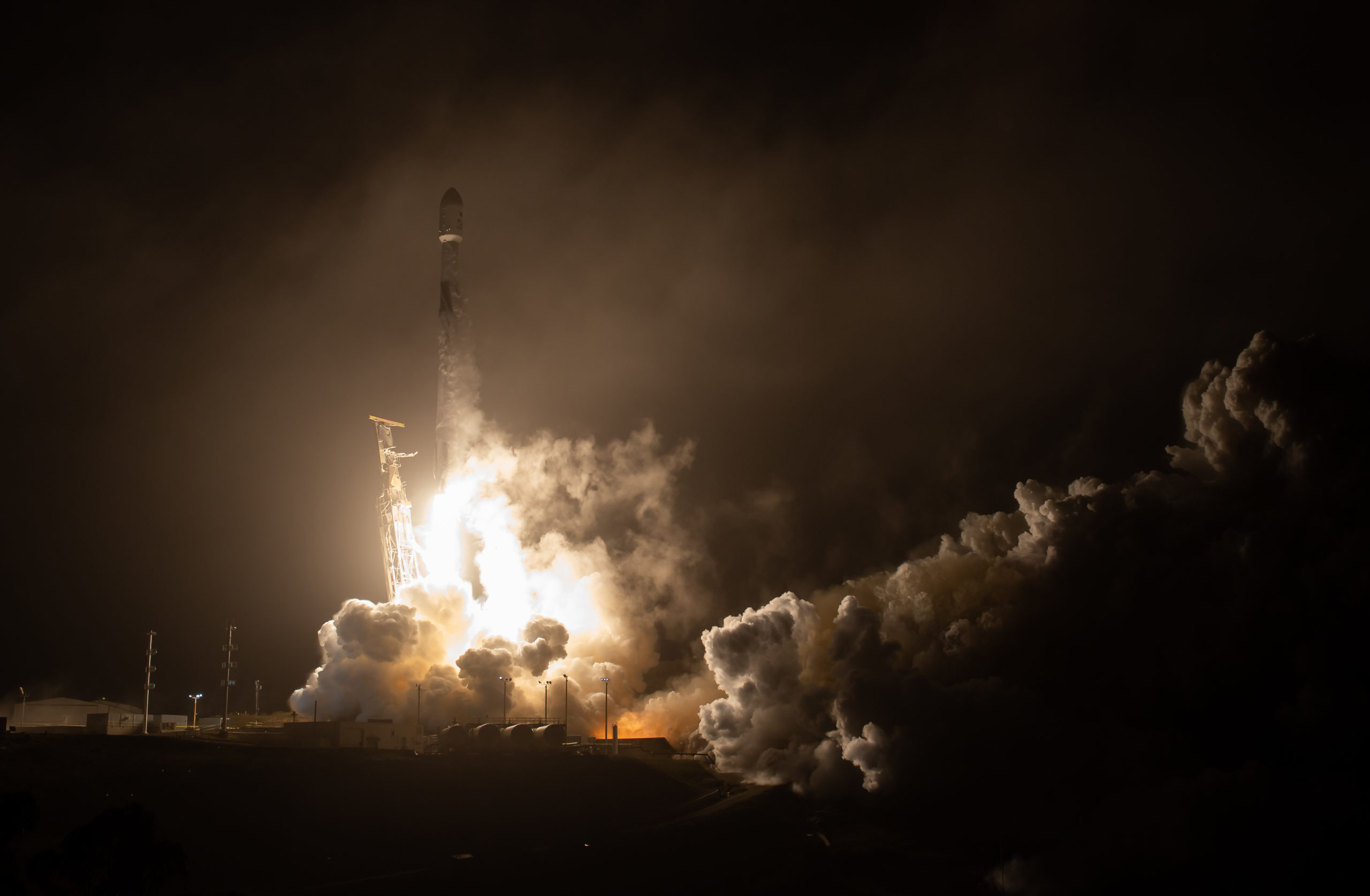
With B1063 gone, the single Merlin 1D+ Vacuum engine of the second stage conducted a lengthy six-minute “burn” to pre-position the 48 Starlinks for deployment. Release of the stack occurred at 18 minutes into today’s flight.
Starlink facilitates high-speed and low-latency internet provision across 56 sovereign nations and international markets in North and South America, Europe, Asia, Oceania and Africa. In recent weeks, Panama, Mozambique and Trinidad and Tobago have officially signed up to the network. And Florida-based intercity operator Brightline adopted Starlink on its trains earlier this year, the first passenger rail service in the world to do so.
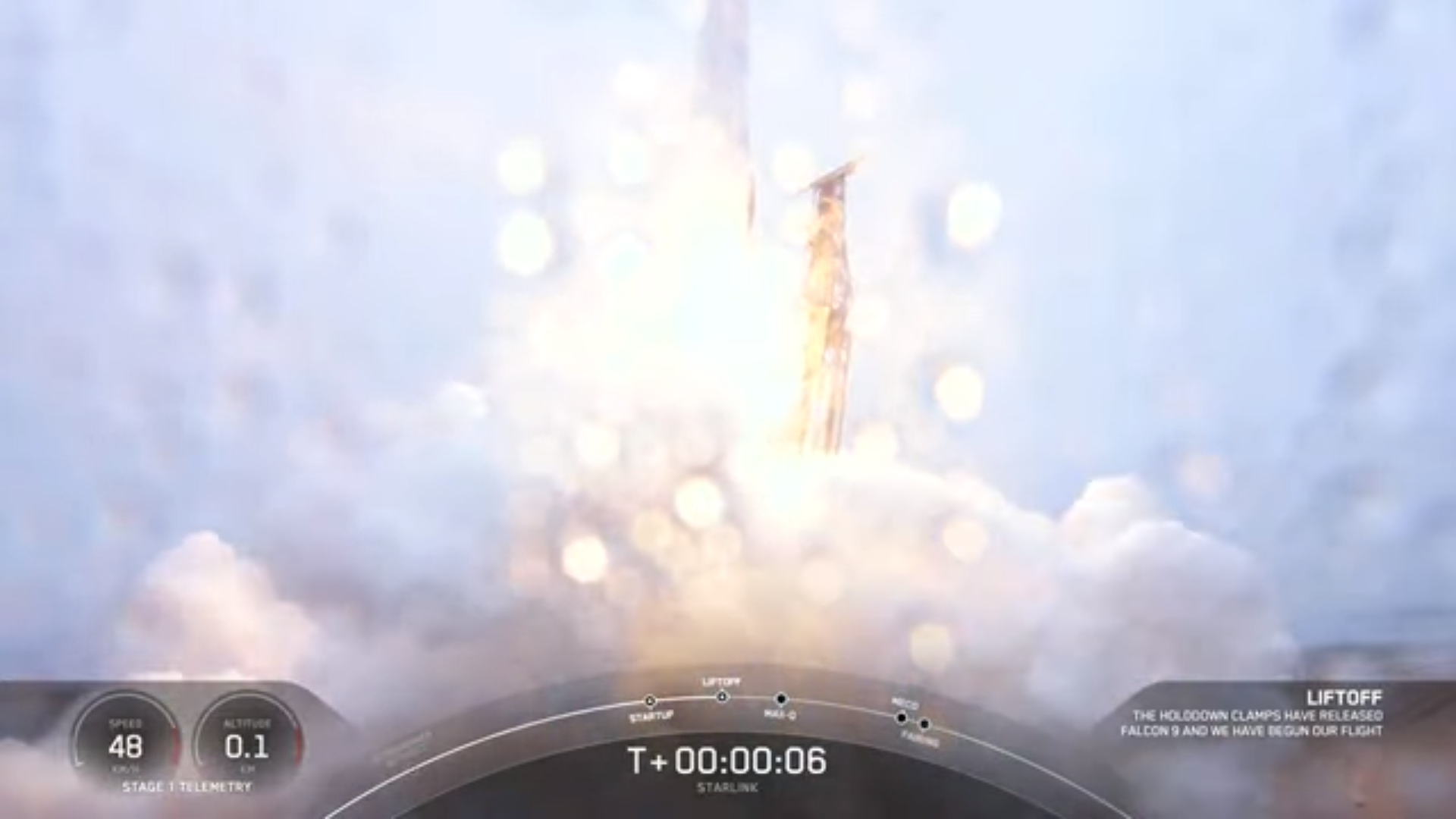
Additionally, El Salvador’s Ministry of Education has begun integrating Starlink capability into its schools to help close the digital divide between urban and remote rural communities. And SpaceX tweeted last month that 50 Rwandan schools are now connected via Starlink’s high-speed internet service.
No sooner has the smoke and dust cleared from Friday’s launch than SpaceX is readying for a second mission from storied Space Launch Complex (SLC)-40 at Cape Canaveral Space Force Station, Fla., with two T-0 points about 12 hours apart in the pre-dawn darkness and post-sunset hours of Sunday. The East Coast-based drone ship, “Just Read the Instructions”, put to sea out of Port Canaveral overnight Wednesday, bound for a recovery spot in the Atlantic Ocean, about 400 miles (640 kilometers) downrange of the Cape.
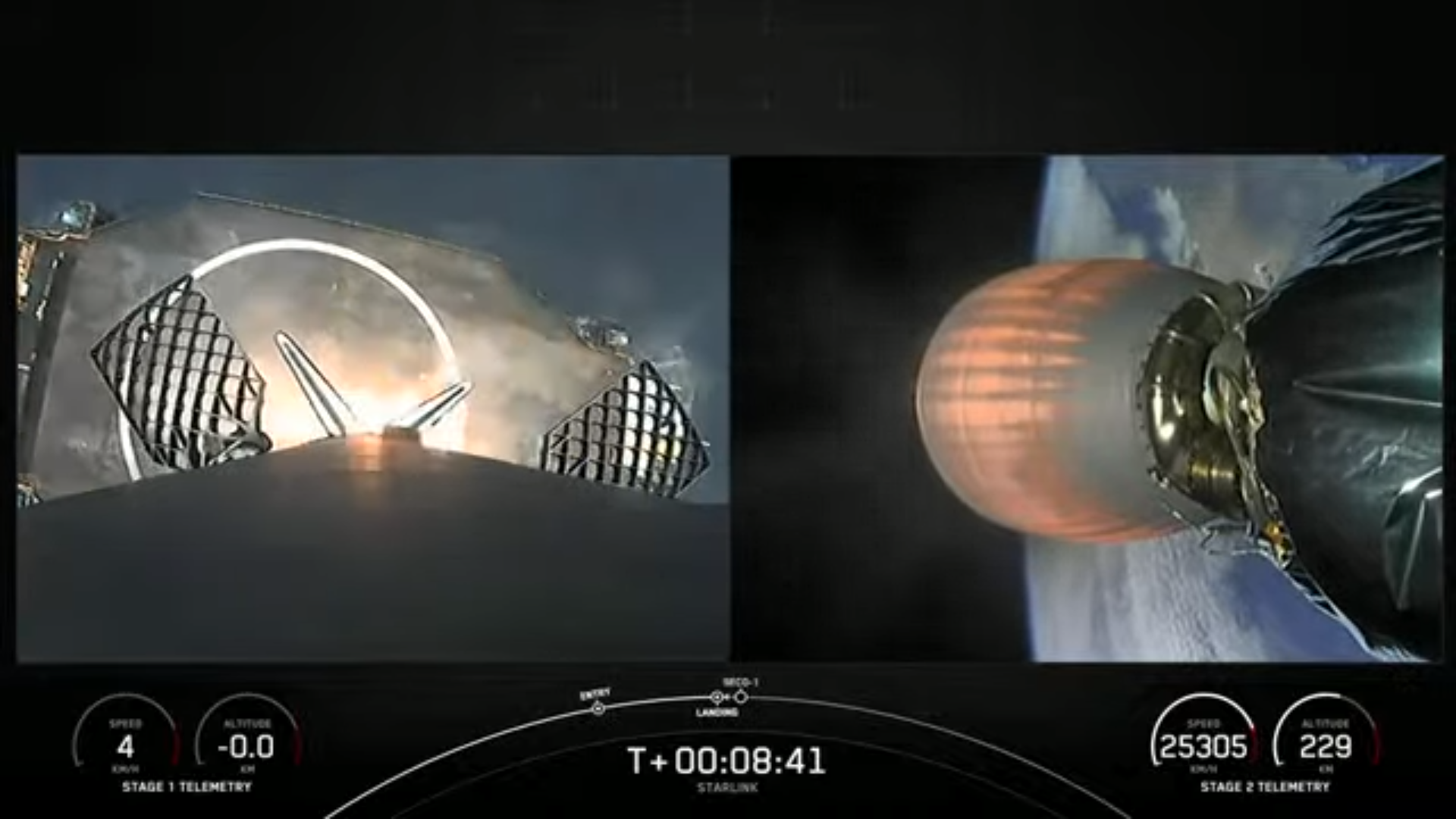
Weather for Sunday’s pre-dawn T-0 is anticipated to be around 90-percent favorable, according to the forecast issued by the 45th Weather Squadron at Patrick Space Force Base on Friday. “Though convection will generally end within an hour or two of sunset, leftover clouds may linger into the overnight hours,” it was noted.
“This will be the case late Saturday night, leading into the primary launch attempt early Sunday morning,” the 45th continued. “However, given the time of the morning, lingering clouds are expected to be limited with overall quiet weather concerns for launch as offshore flow keeps most nocturnal showers offshore.
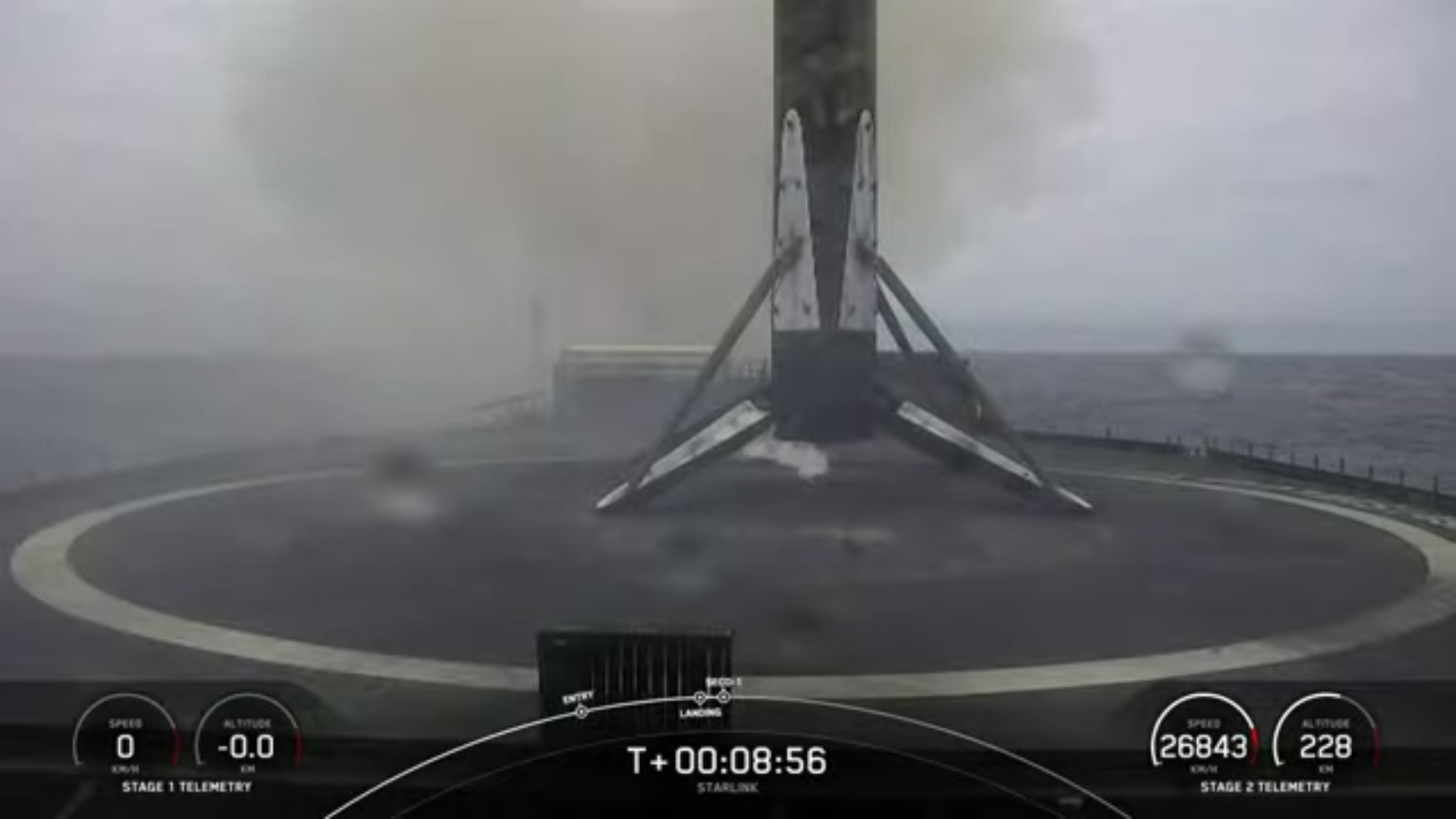
“The remainder of Sunday will likely be a repeat with few changes in the pattern for the backup window Sunday evening,” it concluded. “The earlier timeframe will see a higher threat for remnant anvils and perhaps a surviving shower or storm in the vicinity. This should diminish through the window with a lower threat by late evening.”
Although SpaceX reveals precious little in the way of a definitive flight manifest, there remains an “outsider” chance that it might—just might—achieve its 50th launch of the year before July ends. Friday’s mission was the 45th outing by a Falcon-class vehicle so far this year, including a pair of triple-barreled Falcon Heavy flights in January and April. Putting that into context, it took SpaceX until the first week of October in 2022 to reach 45 launches and, in fact, last year was the first time more than 31 launches were accomplished across the span of an entire calendar year.






I read this blog one thing I really like it is, you are doing your job well. If you keep working like this, your side will get traffic and DA million